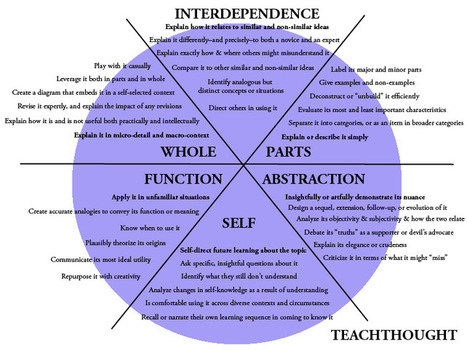How can you tell if a student really understands something?
They learn early on to fake understanding exceptionally well, and even the best assessment leaves something on the table. (In truth, a big portion of the time students simply don’t know what they don’t know.)
The idea of understanding is, of course, at the heart of all learning, and solving it as a puzzle is one of the three pillars of formal learning environments and education.
Via Elizabeth E Charles, Mark E. Deschaine, PhD, Stephania Savva, Ph.D



 Your new post is loading...
Your new post is loading...










